How to Fix the Scroll Wheel not Working in Chrome Problem on Windows?
This is quite a weird problem to face on your computer as it appears that the scroll wheel on your computer’s mouse doesn’t seem to work while you are using Google Chrome. Exiting or minimizing Google Chrome makes the problem go away but many users wonder what might have caused this issue and how to resolve it.
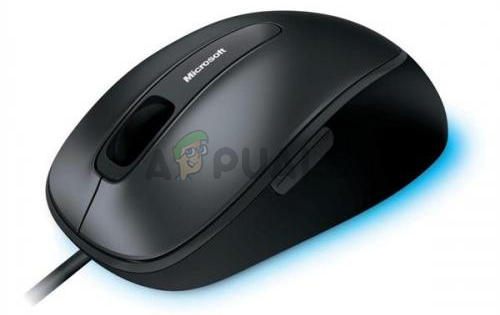
Luckily, many users posted the methods they used to resolve this problem online and we have decided to gather the most helpful ones in this article for you to check out!
What Causes the Scrolling Wheel to Stop Working in Google Chrome?
There are quite a few different things which can cause the scrolling wheel to stop working when in Google Chrome. We have decided to create a shortlist of possible causes for you to check out. Determining the correct cause can help you find the perfect method more quickly so make sure you check out the list below.
- Smooth scrolling – Smooth scrolling is probably already handled by your mouse’s management program installed by the manufacturer. That is why it’s important to disable smooth scrolling in Google Chrome, under experimental features.
- Extensions – Google Chrome extensions which handle mouse movement and scrolling can also cause issues so make sure you disable them and see whether the issue persists.
Solution 1: Disable Smooth Scrolling in Google Chrome
Smooth scrolling is an experimental feature in Google Chrome. Many users who experienced the scroll wheel issue in Google Chrome reported that disabling this option completely managed to resolve the issue and make the wheel operate normally again. Follow the instructions below to resolve this issue!
- Open Google Chrome by double-clicking its icon from the Desktop or by searching for it in the Start menu. Type in the address below in the address bar to open Experiments:
chrome://flags
- Locate the Smooth Scrolling listed below inside the Experiments window, under the Available tab. You can use the search bar at the top of the window to locate it as the list is very long. Make sure you search for Smooth Scrolling, find the related settings, and set it to Disabled.

Disable Smooth Scrolling in Google Chrome - Restart Google Chrome and check to see if using the scroll wheel is still a problem!
Solution 2: Uninstall Mouse-Related Google Chrome Extensions
Using extensions and plugins which change how your mouse behaves when using Google Chrome is not recommended. No matter whose mouse you are using, you probably installed their drivers and management programs which deal with scrolling and mouse movement. Using Chrome extensions as well can only cause this problem to appear and you probably don’t want that!
- Open Google Chrome by double-clicking its icon from the Desktop or by searching for it in the Start menu. Type in the address below in the address bar to open Extensions:
chrome://extensions
- Try to locate the extension which could cause mouse issues (e.g. SmoothScroll or CRxmouse) or an extension which was added recently and click the Remove button next to it to remove it from Google Chrome permanently.
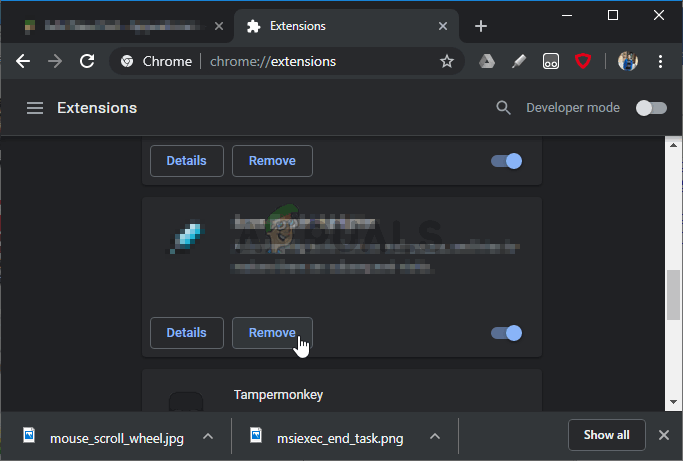
Disable Chrome extension - Restart Google Chrome and check to see if you still notice that the scroll wheel on your mouse doesn’t work when using Google Chrome on your computer!
Solution 3: Reinstall Google Chrome
Reinstalling Google Chrome is a great way to resolve many different issues regarding many different things. Also, this will make sure you have the latest version of the browser installed on your computer and many users have reported that the newest versions seem to have handled this problem completely! Follow the steps below to reinstall Google Chrome.
- Click the Start menu and open Control Panel by searching for it simply by typing with the Start menu window open. Alternatively, you can click the cog icon in the lower-left part of the Start menu to open the Settings app if you are using Windows 10.
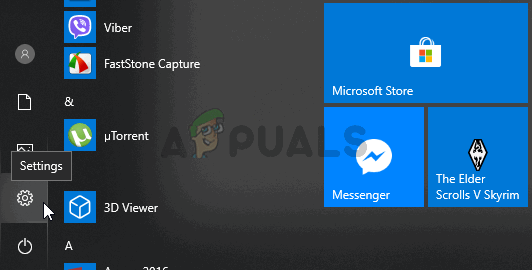
Opening Settings from Start menu - In Control Panel, select the View as: Category option at the top right corner of the Control Panel window and click on Uninstall a Program under the Programs section.
- If you are using the Settings app, clicking on Apps should immediately open a list of all installed programs on your PC so wait for a while for it to load
- Locate Google Chrome in Control Panel or Settings and click on Uninstall/Repair. Follow any instructions which appear afterward to uninstall it completely.
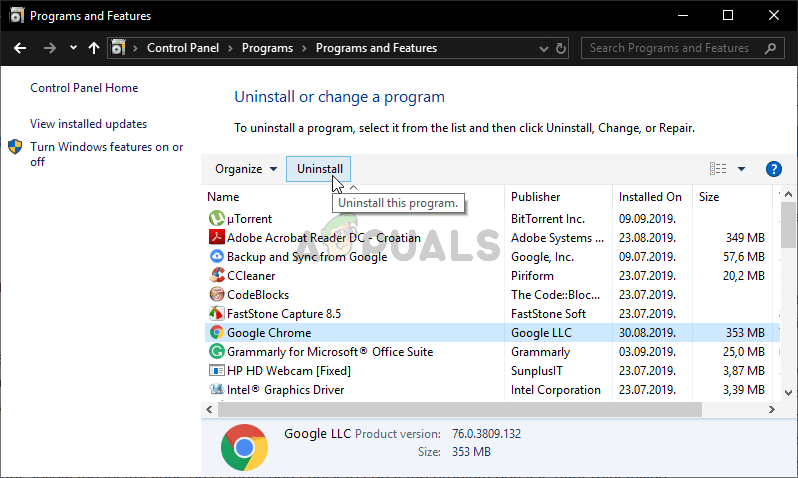
Uninstalling Google Chrome - Download the latest version of Google Chrome by visiting this link. Download its setup file, run it from the Downloads folder, follow the instructions on screen, and check to see if the problem persists after reinstalling the browser!
Solution 4: Use Microsoft Office Scrolling Emulation Only
This useful option located inside Mouse settings in Control Panel managed to resolve the problem for many users. Unfortunately, the option is not available on Windows 10 and 8 so only older versions of the Windows operating system might benefit from this method. Check it out below.
- Open Control Panel by searching for it in the Start menu or by using the Windows Key + R key combination, typing “control.exe” in the Run box, and clicking OK to run Control Panel.
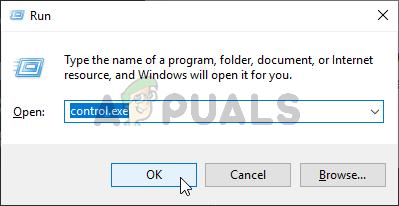
- In Control Panel, select to View as: Large icons at the top right corner and click on the Mouse button to open this section. Navigate to the Wheel tab and make sure the box next to the “Use Microsoft Office Scrolling Emulation Only” box is checked!

- Try scrolling inside Google Chrome now to see if it works properly!
Solution 5: Add an Exception for Google Chrome in Your Mouse’s Settings
This method is also meant for older versions of Windows where this problem most often occurs. Adding an exception for Google Chrome means it will be treated differently and the current settings won’t apply. This leaves room for the app or extension currently controlling Google Chrome to take over. This should resolve the problem for good so make sure you follow the steps below carefully!
- Locate the Google Chrome shortcut anywhere on your Desktop. You can also search for it in the Start menu by clicking the Start menu or the search button and typing. Either way, right-click the Google Chrome entry and choose the Open file location from the context menu which will appear.

- The folder containing the chrome.exe executable should open. By default, it should be C:\Program Files (x86)\Google\Chrome\Application.
- No matter which folder opens, left-click the address bar in the folder, right-click the selection, and choose the Copy option from the context menu which will appear. You can also use the Ctrl + C key combination.
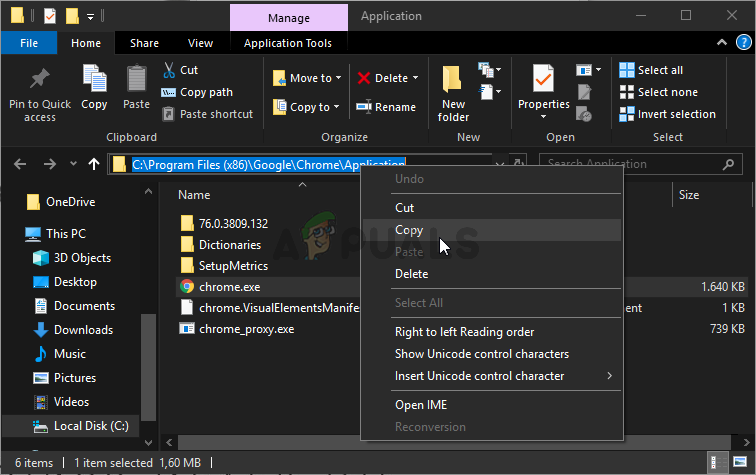
- Open Control Panel by searching for it in the Start menu or by using the Windows Key + R key combination, typing “control.exe” in the Run box, and click OK to run Control Panel.
- In Control Panel, select to View as: Large icons at the top right corner and click on the Mouse button to open this section. Navigate to the Wheel tab and select Exception in the Wheel section.
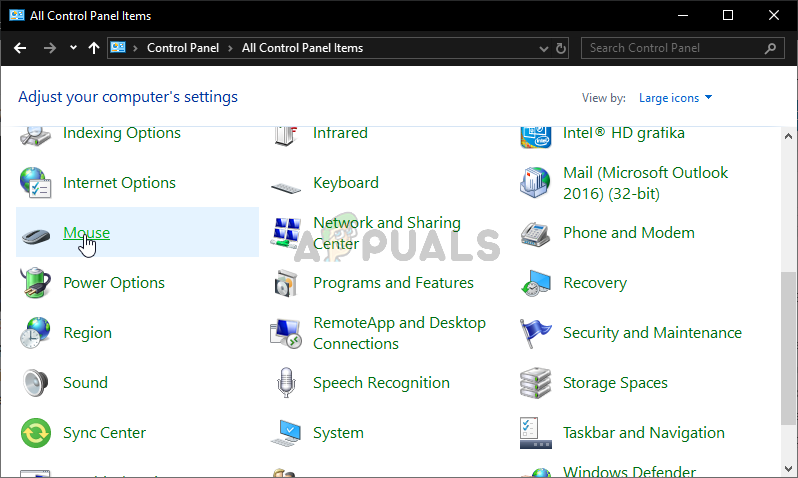
- A pop-up window should appear so make sure you choose Add when it opens. Under Application name, write Google Chrome and under Program Path, right-click and choose the Paste option from the menu. You can use the Ctrl + V key combination as well. Click on Apply >> OK and exit mouse settings.
- Try scrolling inside Google Chrome now to see if it works properly!





